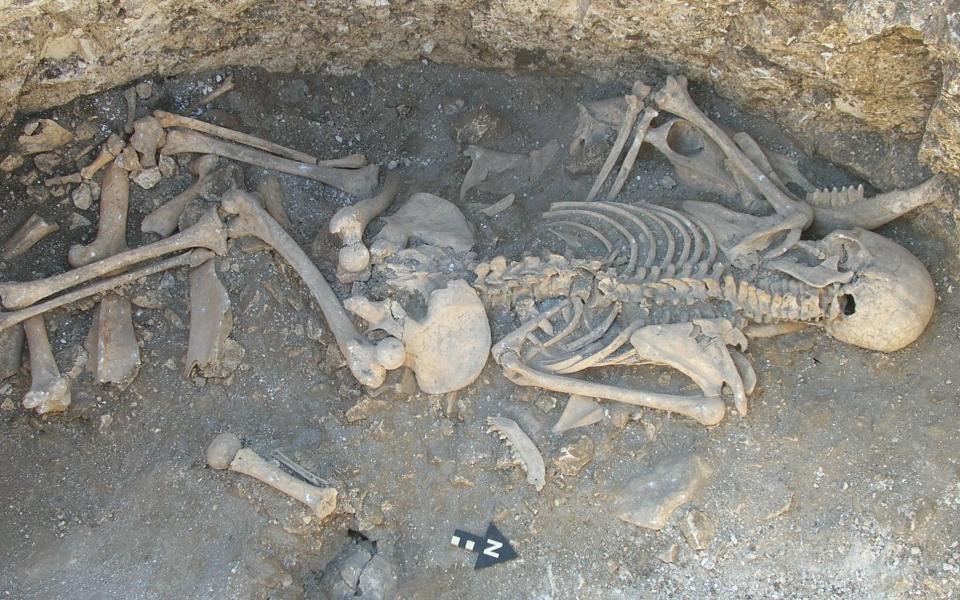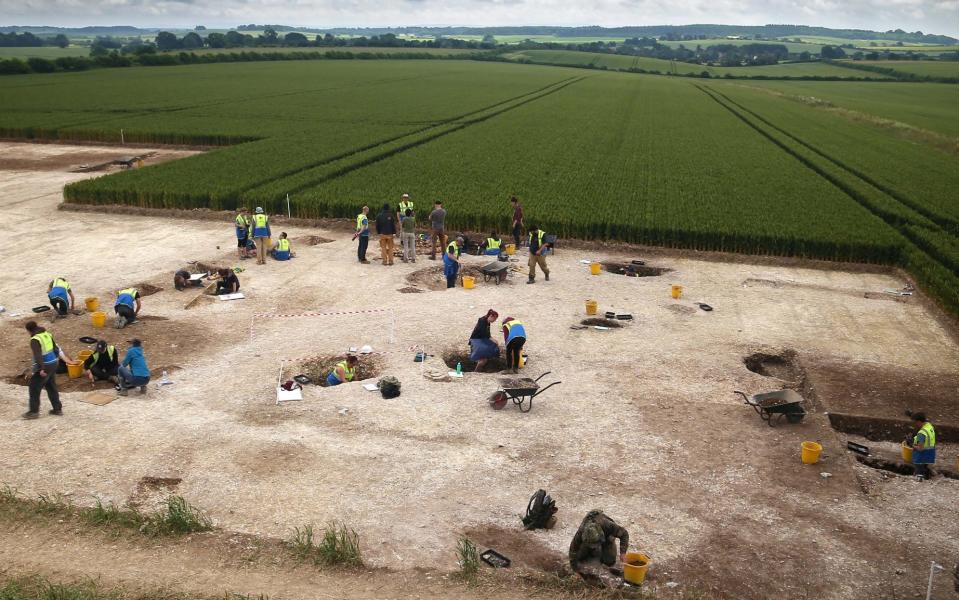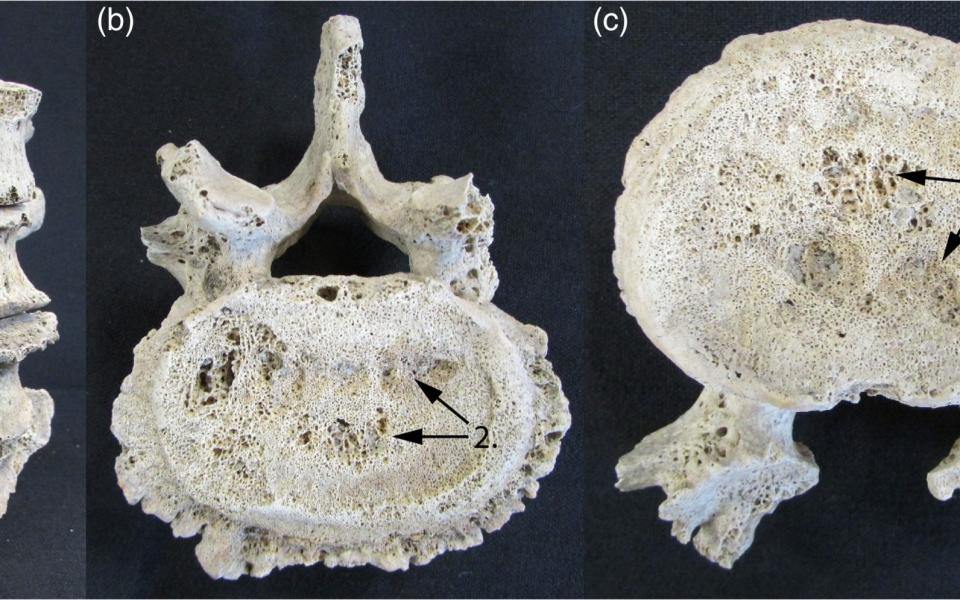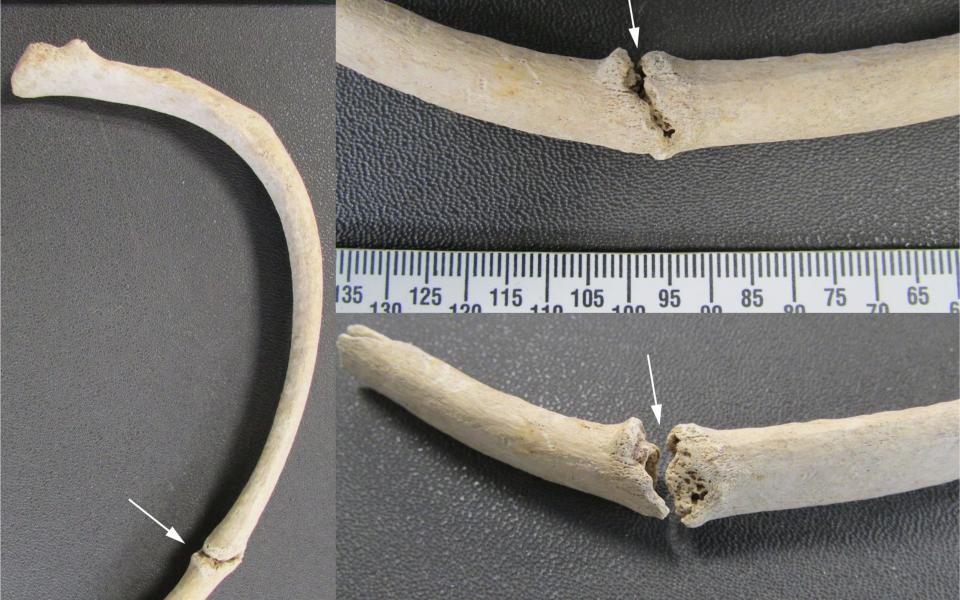Iron Age human ‘blood sacrifice’ victim found in Dorset

An Iron Age woman was the victim of a grisly human sacrifice, archaeologists suspect, after finding her skeleton placed on a bed of animal bones in Dorset.
Experts at Bournemouth University uncovered the body while excavating the 2,000-year-old site of Winterbourne Kingston.
Analysis of the skeleton suggests she was in her late twenties and was murdered by a fatal stab wound to her neck after being bound by the wrists.
She was placed face down in a pit on a crescent-shaped bed of horse, dog, sheep and cow bones, suggesting her body was a sacrificial offering.
Archaeologists said the placement of the body suggested the killing was enacted within the pit, with onlookers invited to watch as part of a larger ceremony.
In the weeks before her death, she also suffered damage to one of her ribs, and wear and tear to her bones suggest she had lived a short but demanding life.

Although ritual sacrifice in Iron Age Britain is documented by classical authors, there is scant evidence that it actually occurred.
“In the other burials we have found, the deceased people appear to have been carefully positioned in the pit and treated with respect, but this poor woman hasn’t,” said Dr Martin Smith, associate professor in forensic and biological anthropology at Bournemouth University.
“We have also previously found ceramic pots and remains of joints of meat next to human remains, which we believe are offerings for the afterlife.
“This was nothing like that. The young woman was found lying face down on top of a strange, deliberately constructed crescent shaped arrangement of animal bone at the bottom of a pit, so it looks like she was killed as part of an offering.”
The archaeologists speculate that the woman may have acted as a scapegoat, used to “bear away the perceived sins of impurities ascribed to the wider community”.
The ritual may also have been a blood sacrifice, with the “sudden flow of blood from the throat of the victim directly into the bone and soil” acting as a “physical and supernatural nourishment” of the earth.

Although human remains have been found at the site, buried in graves and storage pits, they tended to be high status, and archaeologists said the new skeleton appeared very different.
Analysis of the woman’s spine showed signs of significant degeneration and arthritic change for her young age, and she also had damage to some of the discs between her vertebrae. This indicates exertion from regular hard work.
She also had well-developed and rugged muscle attachments, another sign of a rigorous and continuous physical activity.
The team also studied the isotopes in her teeth, which can show which area a person grew up in as a child. It suggested that she originated from over 20 miles from the settlement.

They are now carrying out DNA analysis to establish whether she was brought to the settlement as an outsider from another community.
“All the significant facts we have found such as the problems with her spine, her tough working life, the major injury to her rib, the fact she could have come from elsewhere, and the way she was buried could be explained away in isolation,” Dr Smith said.
“But when you put them all together with her deposition face down on a platform of animal bone, the most plausible conclusion is that she has been the victim of a ritual killing.
“And of course, we found a large cut mark on her neck which could be the smoking gun.”
He added: “Being able to humanise the story of this woman’s life has given us a valuable glimpse into the other side of Iron Age society. Behind every ancient burial we find is someone’s story waiting to be told.”
The findings have been published in the Antiquities Journal.

 Yahoo Sport
Yahoo Sport 






































